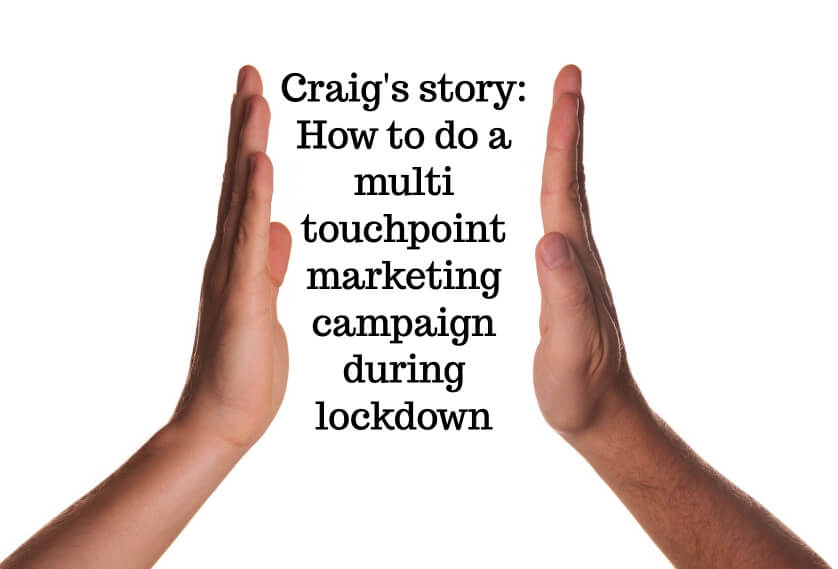Most MSP owners I meet have no problem closing sales. The issue is getting in front of the right people at the right time.
In the last couple of articles, I’ve explored a more robust sales process for your business.
Part 1: The simple reason you don’t get more sales appointments
Part 2: Can you really sell IT support with a few emails? (YES)
This article is the final part in this mini series.
Once you’ve built your own database of prospects, and worked that database to build a relationship with the people, you need to get them to put their hands up again.
This time they are putting their hands up to declare themselves to be a prospect.
A lead: Is someone in your database, who you’re building a relationship with
A prospect: Is someone who has put their hand up and effectively said “I’m interested in what you sell”
So essentially, a prospect is a prospective future client. They have moved into the final stages of your selling process. You’re going to meet with them; learn about their business; put in a proposal, or whatever you do to close sales.
There are two primary ways to turn leads in your marketing database into prospects – passive and active.
Passive: The slow way
The passive way is to sit back and wait for your leads to becomes prospects, when they are ready.
For example, in all of your follow-up emails you have a call to action at the end. It might say something like “if you want to talk to us about IT support for your business, please call us on…”.
And you literally wait for the people in the database to call you.
You might be waiting a long time. People buy when they are ready to buy, and the majority of people in your database will not call you.
The good news is, when you do get a call, they will be a very high quality prospect, with an exceedingly high chance of converting into a client.
There’s nothing wrong with passively waiting for leads to turn into prospects. It’s just slow. For many people, that’s OK. The business grows at a nice controllable rate.
For others, it’s just too frustratingly slow. And when you feel like that – or you need a boost in sales – you use a more active method.
Active: The faster way
This is where you proactively work your database, to find which of your leads are ready to turn into prospects today.
The most efficient way to do that is through telesales.
You know, I hate that word. It has so many negative connotations.
OK, scratch that. This process isn’t telesales. It’s using the phone to move the relationship forward.
You get someone to:
-
1) Call the active people in your database
2) Get to know them and add some meat to the bones of your relationship
3) At the appropriate point, turn them from a lead into a prospect by asking for a meeting
Here are the most common questions about this process.
Who does the calling?
Not you. Not any of your support team. And certainly not anyone who has ever done hardcore telesales (selling stuff over the phone).
You don’t want sales people, sitting in a boiler room, hitting your database to SELL SELL SELL. That’s completely the wrong approach.
Instead, you want someone nice and friendly, who doesn’t mind spending several hours a day on the phone. That’s my personal idea of hell… but I bet there are people out there who salivate at the idea!
I’ve hired and fired dozens of telephone people over the years. The best ones have been older, with some life experience behind them. Mums looking for part-time work around school hours are perfect.
And you want natural chatters. The person who loves talking more than working is perfect for this.
If you don’t have someone like this in your team who’s free to do this for a few hours each day, then create a new part-time position. Be prepared to kiss several frogs before you find the perfect person.
Who do they call?
The best results will come from calling the most active people in your database.
Remember, you are sending out an email every week. That’s a great way to see who is active.
Your telephone person should call, in priority order:
First: People who have clicked a link in your email
Then: People who have opened the email, but not clicked a link
And if they are really stuck for people to call: Everyone else
You’ll get the best results from calling the people who are most active (they’re clicking the links in your emails and reading your stuff), than the people who aren’t even seeing your emails.
The bigger you can make your database, the more of these people there will be.
What do they say?
They ask questions. Open questions. And lots of them.
What improvements are you making to your business this year? What projects are you working on right now? What’s frustrating you about your current IT set-up / telecoms?
Let your telephone person use their natural chatty skills to keep the conversation going. We’re aiming for a 5 to 10 minute conversation here. It’s a relationship builder.
There’s only one rule – they must spend most of the call talking about the lead’s business, and not your business.
Because you don’t want this to come across as a sales call in any way. It’s not. It’s your business getting to know someone else’s business (in the context of technology and IT support).
How do they generate a sales appointment?
Some of these calls will end with no immediate conclusion.
The telephone person says it was nice to chat, and does the person mind if they call back every 3 months or so just to keep in touch?
Few people decline this. So your telephone person writes up some brief notes and schedules a follow-up call in the CRM.
Other calls will end in opportunity to trigger an appointment.
The telephone person will sense a need or a want that your business can fulfil. It’s why you must keep them fully up-to-date with what your business does and the kind of problems it can help to solve.
So they offer the lead they are chatting to, the opportunity for a sales appointment.
WAIT A SECOND. YOUR TELEPHONE PERSON SHOULD NEVER DO THAT!
Because who wants a sales appointment? NO-ONE!
Your business’s days of doing sales appointments are hereby, officially over. Instead, you are going to do Strategic IT Assessments, or technology consultations, or whatever you call them.
You’re not sending a sales person to talk to prospects. You’re sending an IT consultant. For clarity, it’s the same person doing the same process, but positioned in a different way.
You see, when someone has built a relationship with your business over email and the phone, and then a consultant turns up to help them solve a problem or meet a challenge, they are dramatically more likely to buy from that person and business.
This is a lot easier for a telephone person to offer.
Here’s a guideline script they might use
There’s a formula for your telephone person to use:
- Recap the prospect’s situation
- Correctly position the consultation
- Offer an either/or appointment
It would go something like this.
Chat, chat, chat, open questions, open questions, etc etc.
“Suzanne, from everything you’ve told me today and from when we last spoke a couple of months ago, I think you’ve got some interesting challenges ahead.
“You told me you’ll be doubling your staff in the next two years. And you’ve got that old steam-powered server straining to keep up as it is.
“I’m going to recommend something to you. We have a guy called Bob Jones who works here. He’s our Senior Strategic IT Consultant. He’s the guy we send to our client’s sites to assess a setup and make recommendations.
“He’ll need 90 minutes with you to assess what you’ve currently got; ask you in more detail about the future of the business; and then will make a recommendation of the best IT setup going forward.
“It’s critical you know there’s no cost for this consultation – I want to offer it to you because I think we can help you get some clarity on your IT. And there’s no obligation to buy anything from us ever. Some people choose to use us to implement their plan, some don’t. That’s OK either way.
“Bob is a pretty busy guy as you can imagine. He’s available to come to your office on Tuesday afternoon. Or Thursday morning. Which of those works best for you?”
Notice that the prospect wasn’t given the choice of turning the appointment down!
Never ask someone if they want an appointment – give them an either/or choice (either his, or that). The majority will book an appointment; either in one of those slots or something that suits them better.
Actively generating appointments is hard work. But it’s really, really worth it
You’ll find a great deal of your management time will need to go into this, in the early days.
Like anything brand new, you don’t yet know what mistakes you are going to make!
But it’s really worth is. Having an active way to generate appointments like this can have a dramatic effect on your turnover and net profit.
Do it well and you can literally triple your sales within the next few months.
As always, if you have any questions please pop them in the Facebook comments below. Or email me directly hello@itsupportmarketing.co.uk.




